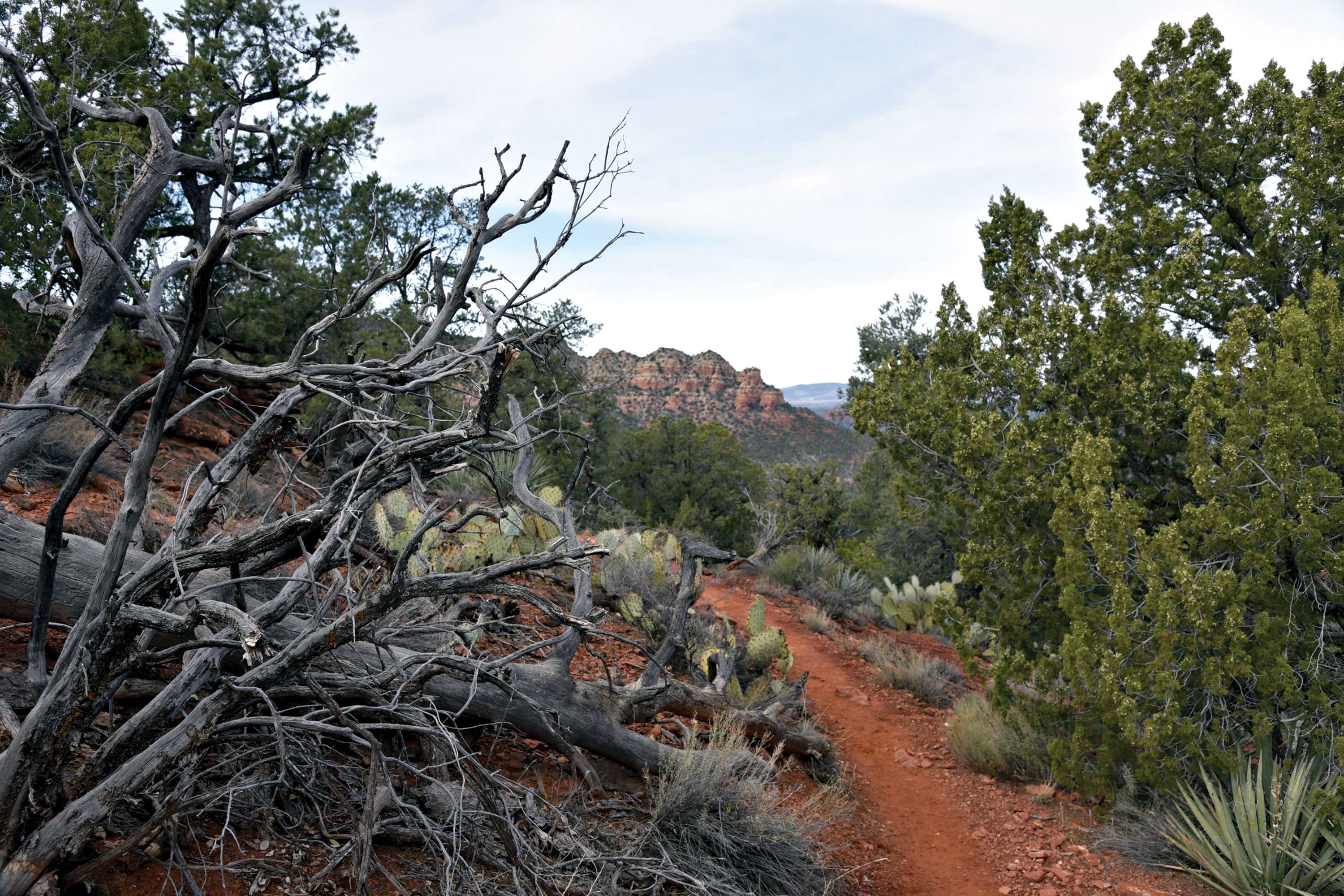
Transept Trail
Drive Time from the Valley: 98 minutes Even the peaceful karmic haze that presides over springtime in Sedona can’t totally mitigate the buzzkill of big hiking crowds. Drawn by the promise of balmy breezes, peaceful vistas, wildflower mania and miles of easy-access trails, visiting hikers instead encounter loud, elbow-to-elbow mobs and bumper-bruising parking conundrums at popular trailheads. This is the new reality of hiking in what is often touted as one of the world’s most beautiful places. It is beautiful. But now, you have to go in the back door to cash in on the promise. Recently realigned and adopted into the Coconino National Forest menu of Red Rock Country routes, the Transept Trail maintains its outlaw groove. It’s more difficult and exposed to precipitous drop-offs than other area hikes. Also, it’s not conveniently located and there’s limited parking at the tiny trailhead with few overflow options. Unlike most Sedona trails that have optional shortcuts, this 6.4-mile round-trip trail – which traces the slopes below the Seven Warriors ridgeline west of Bell Rock in the Town of Oak Creek – has only one, and it’s located at a 4,570-foot landing where it intersects with the equally queasy Hiline Trail. By the time you pass the hike’s signature Mayan Maiden rock formation a half-mile in, you must commit or quit. Beyond the Maiden, the going turns rocky, narrow and steep, with no way out except to turn back. Directions/Info: sedonaredrocktrails.org/ROGS/HilineTransept.pdf
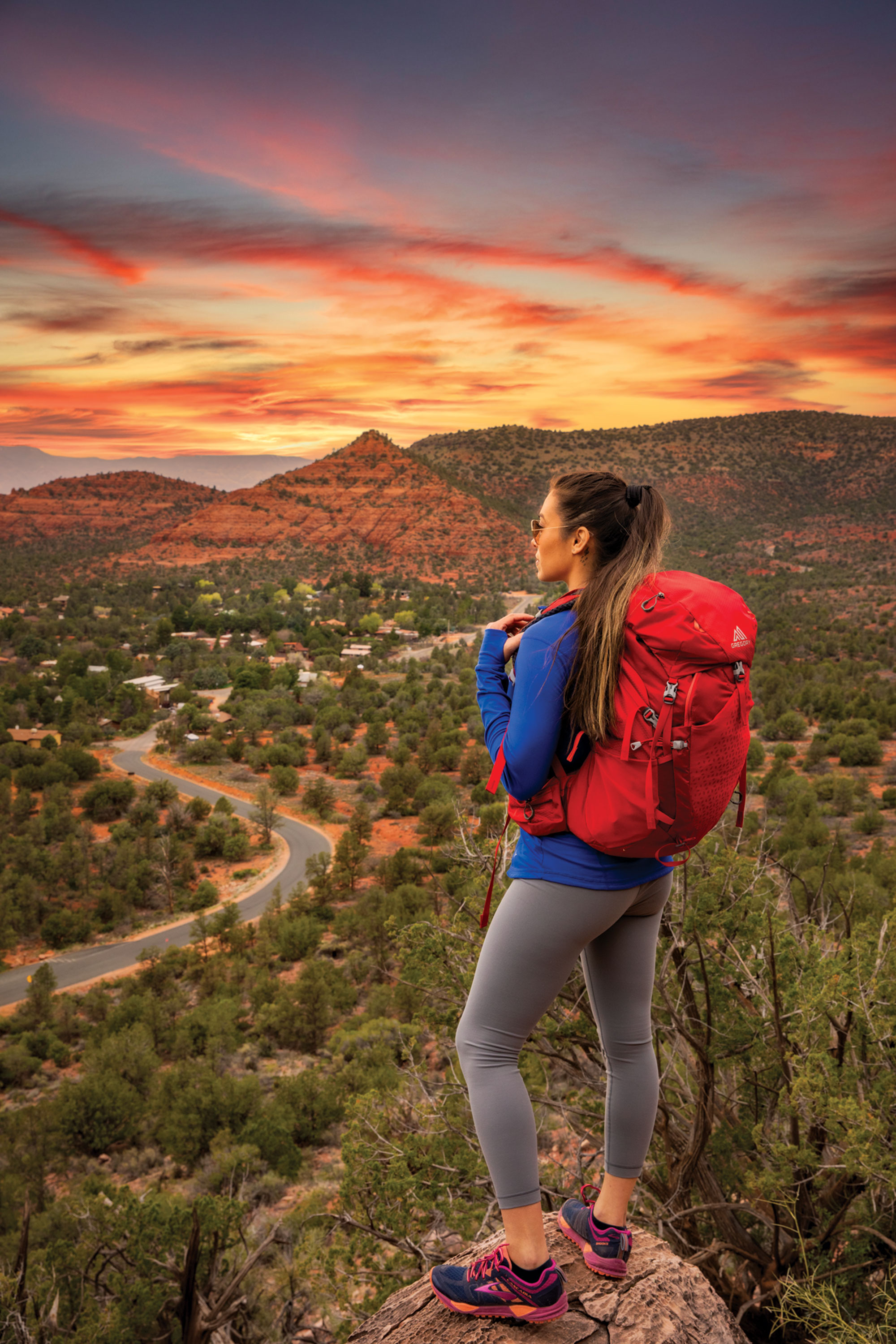
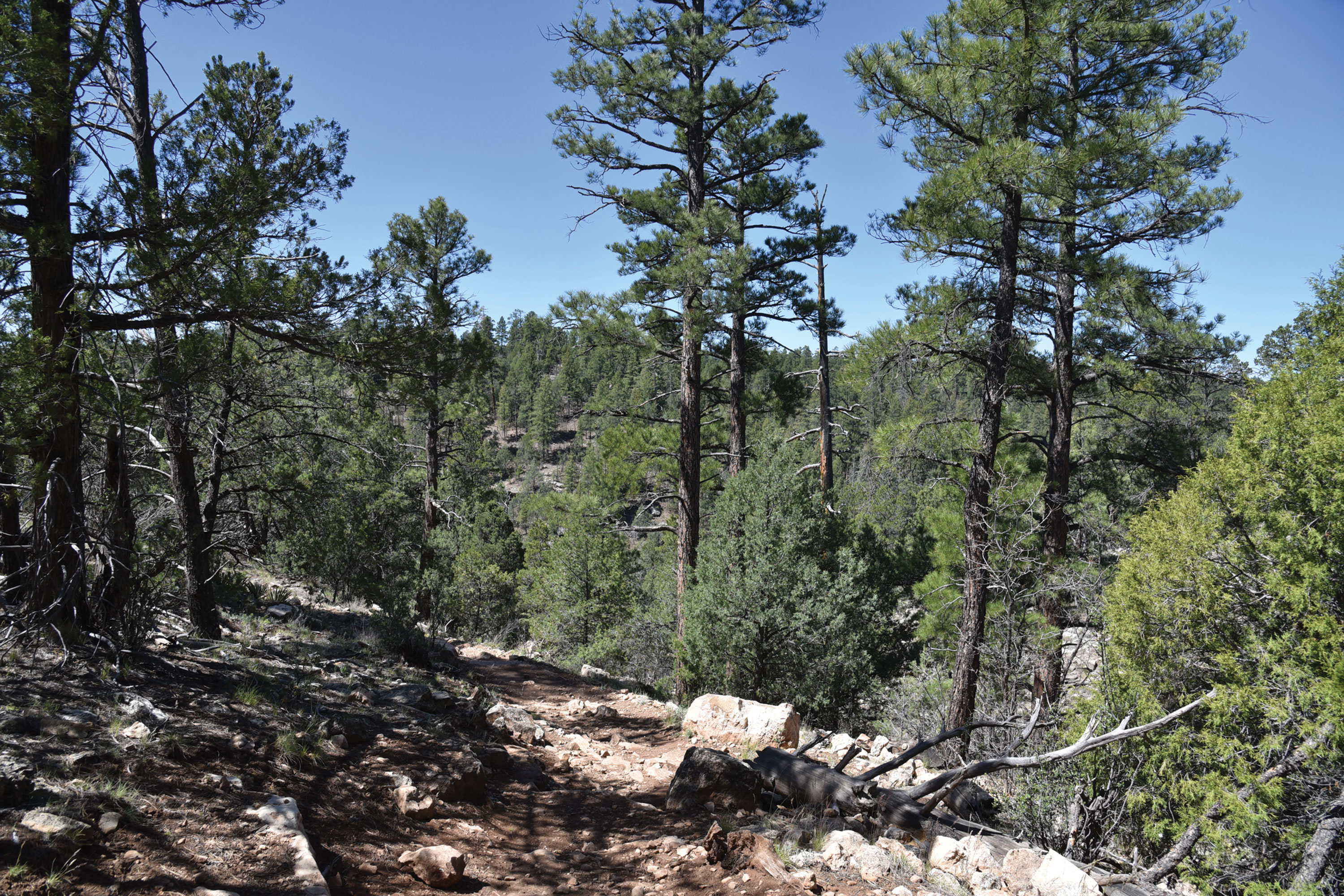
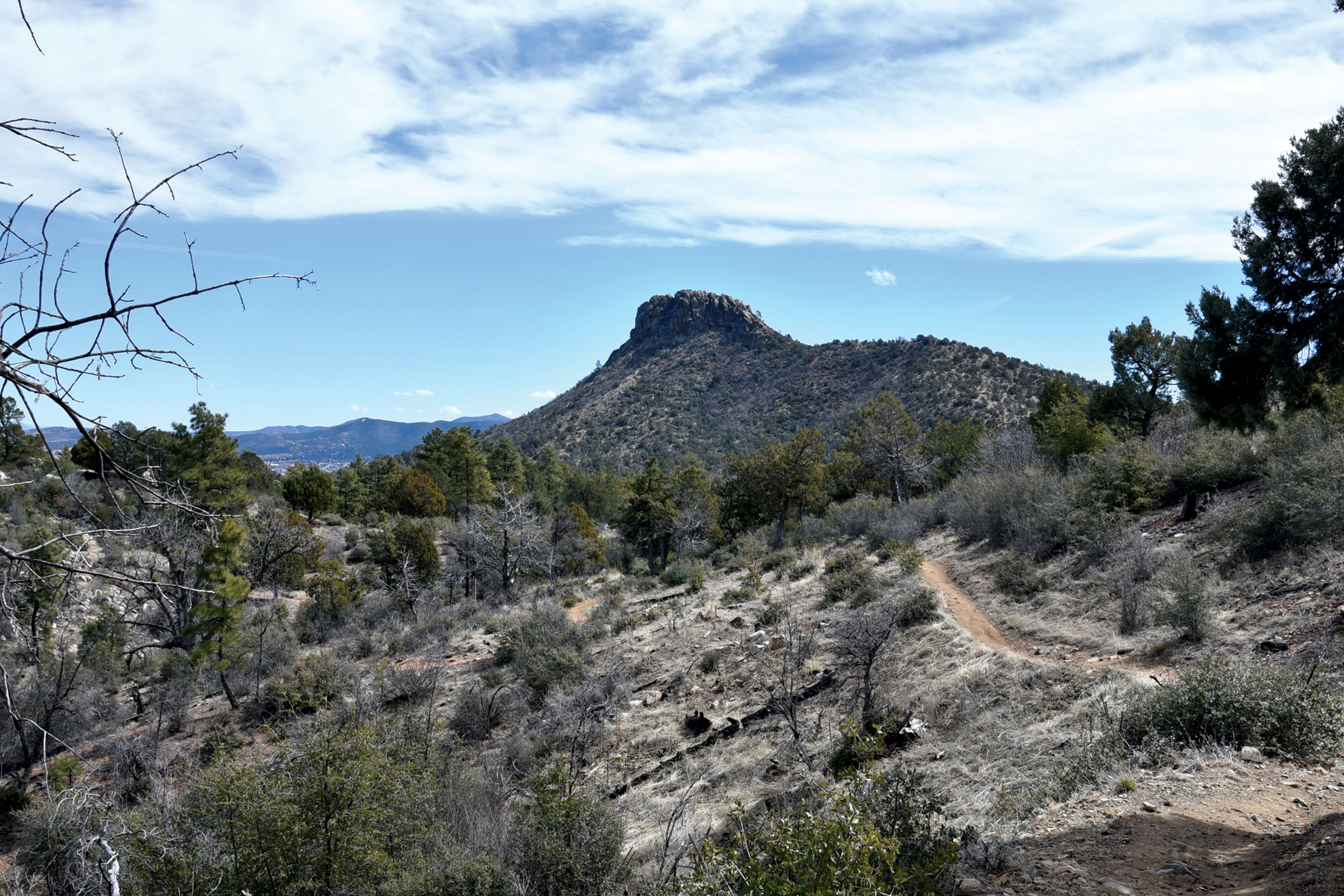
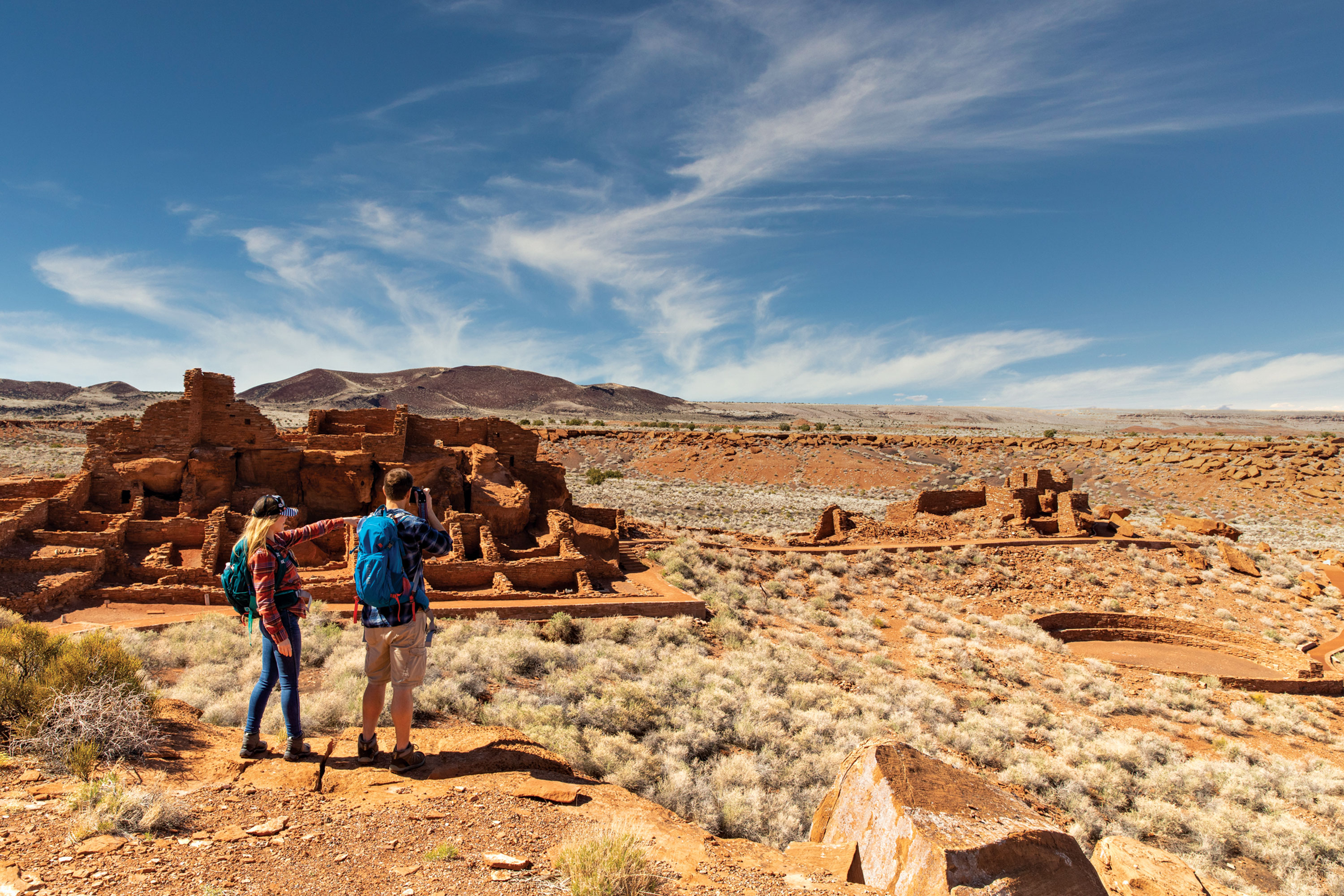
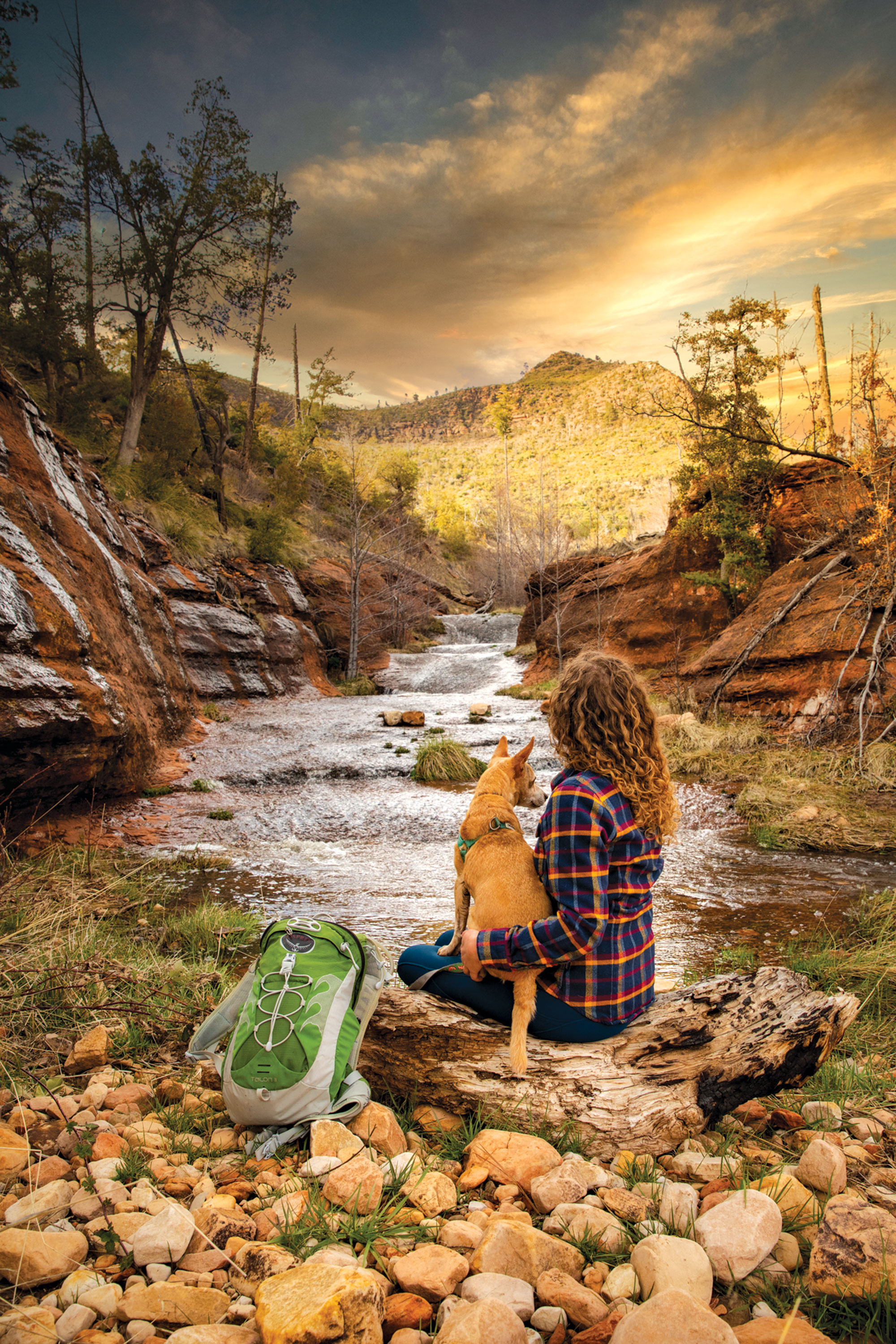
Create an Account
Search the MLS and featured property listings in real time.